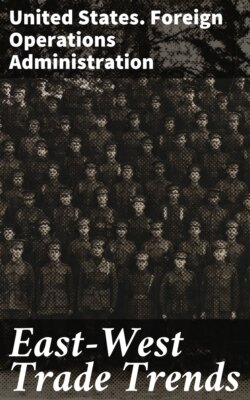Читать книгу East-West Trade Trends - United States. Foreign Operations Administration - Страница 17
CHAPTER III
ОглавлениеThe Kremlin’s Recent Trading Activities
In midsummer of 1953, at about the time of the Korean armistice of July 27 and just before Malenkov’s major speech of August 8, the Soviet Union attracted world attention by a flurry of new trade agreements with non-Communist countries. There was another flurry around the end of the year.
During the last 9 months of 1953 and the early part of 1954, the representatives of U.S.S.R. adopted a somewhat more polite and businesslike manner in their commercial dealings with the free world. They not only said they wanted more trade (they had never stopped saying it) but they took more steps to bring it about. Besides trade agreements, they signed more contracts with private firms. In Moscow they warmly entertained traveling salesmen from the West. In Western capitals they staged a few cocktail parties and press conferences. They poured more funds into eye-catching exhibits at “trade fairs” from Copenhagen to Bangkok. They made grandiose offers to buy, and gave them great publicity. Some offers to buy, sell, or barter they made quietly through commercial channels. They showed signs of wanting the nonindustrial portions of the world to regard them as a helpful “big brother” bringing both trade and aid.
These activities, which many writers have called a “trade offensive,” carried with them important meanings for the free world. In this chapter we shall examine the activities and probe for the meanings.
